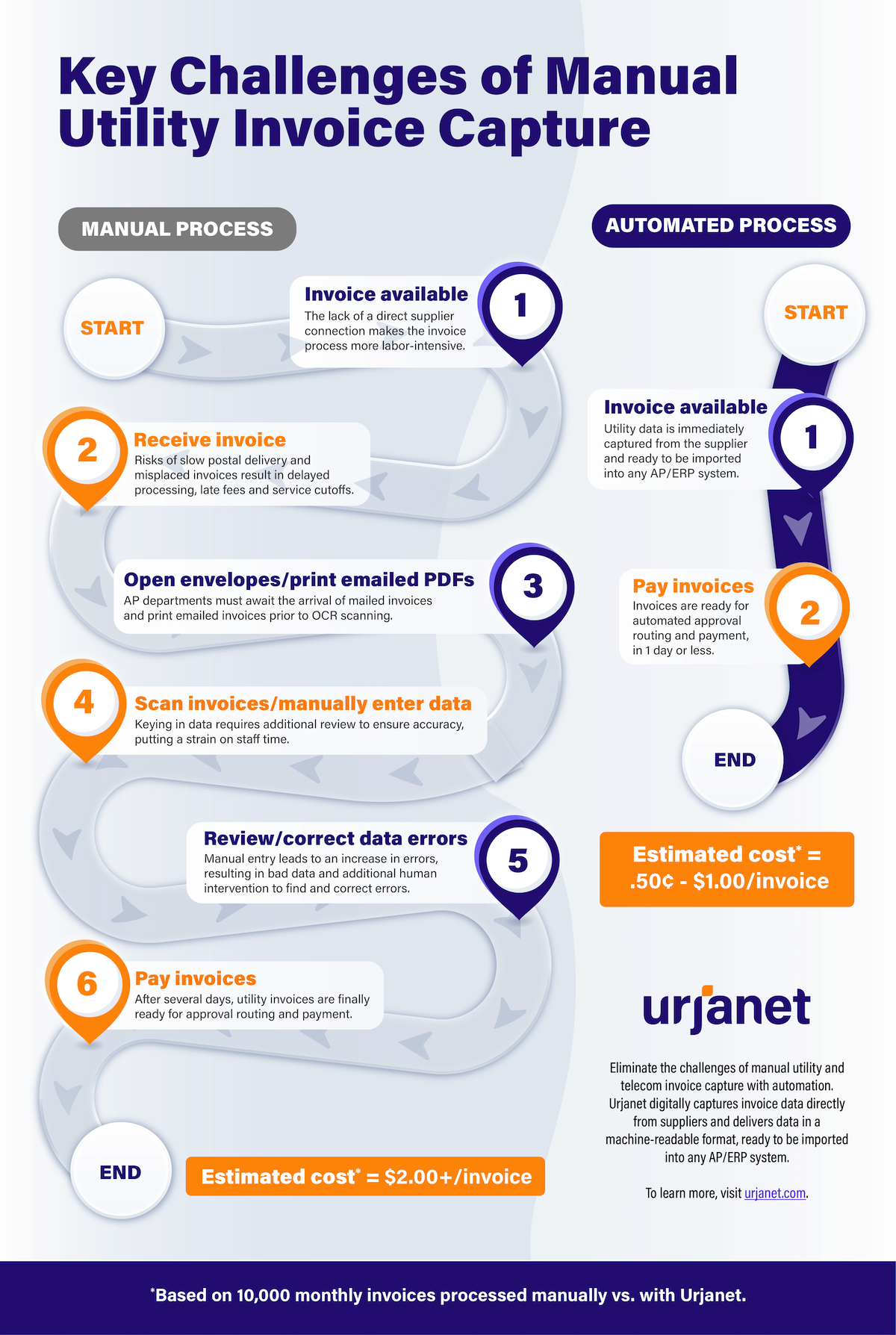
The Key Challenges of Manual Invoice Capture
Ma-Keba Frye | May 27, 2020 | AP Automation
Despite constant advancements in technology, many accounts payable departments still rely on laborious and time-consuming manual invoice capture. Processing utility invoices manually requires a multistep workflow that can complicate utility invoice management and drive up costs.
Although many AP practitioners have set goals to automate more of their processes, utility invoices are still mostly paper or PDF-based. But continuing to rely on this manual process has costs that should be avoided, especially when there’s a better alternative. Let’s explore the hidden inefficiencies of manual invoice capture and how it compares to an automated process:
Key challenges of manual invoice capture

Manual utility invoice capture
Manual utility invoice data collection and aggregation is a tedious multistep process that often results in delays, drives up costs, limits the visibility of key metrics regarding consumption and trends, and has an estimated error rate of one percent.
Get the full guide to utility invoice automation >
Many utility suppliers still distribute paper and PDF-based invoices. Due to a lack of a direct supplier connection, AP departments must await the arrival of invoices for several days, raising the risk of slow postal delivery or misplaced invoices. This lag in invoice arrival can result in late fees and even service cutoffs.
Once invoices are received, data is often scanned or keyed in manually, followed by a data quality check. After several days, utility invoices are finally approved and paid. By eliminating paper and PDFs, AP departments can cut back on these steps, improve operational efficiency, and reduce costs.
Automating utility invoice capture
Automation in invoice processing isn’t a new concept, but many AP departments have been slow to adopt new technology. Implementing a touchless process can yield many benefits, including significantly shortening the process. Reducing human intervention also improves accuracy and reduces errors by 37 percent.
Reducing human intervention reduces payment errors by 37%.
With an automated process, once invoices become available via a direct supplier connection, they are ready for approval routing and payment in one day or less. Reducing the time it takes to process an invoice translates to cost savings as well: automated processing costs less than $1 per invoice, whereas manual processing can cost two to several times higher.
Read more from Ardent Partners on the value of straight-through processing >
The solution you’ve been missing
End-to-end automation can empower AP departments by improving efficiency, reducing costs, and delivering accurate and reliable data. Read more about the state of utility invoices in our white paper: Reducing Hidden Areas of Inefficiency and Costs with Utility Invoice Automation.
You might also be interested in:
- Three Ways AP Automation Service Providers Can Improve Customer Satisfaction
- A Review of Utility Invoice Automation Methods
- 7 Shortcomings of Manually Entering Utility Bill Data (And the Benefits of Automation!)
If you like what you’re reading, why not subscribe?
About Ma-Keba Frye
Ma-Keba Frye is a Content Marketing Associate at Urjanet, assisting with content development and execution. When she's not writing, she enjoys reading, listening to music, and volunteering.
